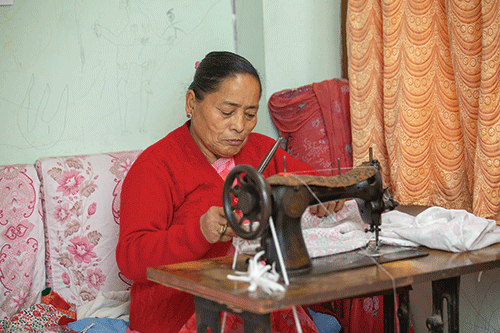Shankhamul is one of the twelve “most-sacred” confluences in the Kathmandu valley as defined in the numerous chronicles that document the history and legends about the Kathmandu valley. The spaces where two or three rivers flow into each other across Nepal are all sacred sites. At Shankhamul, the Bagmati River that flows south from the Pashupati temple complex, and all the rivers that flow from the eastern part of the valley including the Manohara River merge. The river then continues its journey west, south and then out of the Kathmandu valley at Chobhar and then on to the Terai. The source of the Bagmati River is also in the valley, up the southern slopes of Shivapuri hill to the north. The source is known as Baghdwar and is a wonderful hike in the Shivapuri National Park.
 The local people of Patan who belong to the various traditional trusts (guthis) have now come together to preserve the built and natural heritage at Shankhamul. Please take a walk down and see what Nepalis are capable of when they set their minds on something that is important to them. The results of the restoration of the cremation ghats, a flower garden and a paint job on the various structures along the Bagmati has made the whole place really worth appreciating. There is no doubt that this effort by the local community will be recognized and others along the Bagmati and its various tributaries will want to replicate.
The local people of Patan who belong to the various traditional trusts (guthis) have now come together to preserve the built and natural heritage at Shankhamul. Please take a walk down and see what Nepalis are capable of when they set their minds on something that is important to them. The results of the restoration of the cremation ghats, a flower garden and a paint job on the various structures along the Bagmati has made the whole place really worth appreciating. There is no doubt that this effort by the local community will be recognized and others along the Bagmati and its various tributaries will want to replicate.
At the local Buddhism learning center you can see a statue of the Maitreya Buddha unearthed in 1987 from Shankhamul and is dated the 10th century. This kind of find happens in many historical sites of Kathmandu valley where monuments have been built, destroyed by nature or man and then rebuilt again. The reason for any confusion as to whether any sight is Buddhist, Shaivic or Vaishnav is due to this reason as well. Different idols and temples were built at different times on the same sacred site. Similarly the three storey Chamunda Temple is said to be dated at 3rd century AD. Everything indicates that this is a very ancient site in the valley.
At the eastern side of Shankhamul is a beautiful temple complex established by Jagat (Sumshere) Rana, one of the younger brothers of then Prime Minister Jung Bahadur Rana (similar name as his son Jagat Jung). The work was carried out in 1860AD and the main temple complex is dedicated to Shiva and Narayan. The most striking features of the temple complex are the presence of very large stone statues of Hanuman, Ganesh and Garuda. The complex is still in good condition and really worth visiting.
For many people who are feeling helpless and desperate about the state of the Bagmati River, Shankhamul’s new look gives hope. The river that gave life to this valley is in a bad state and needs our help. We can each play a role no matter where we are and what we do. We also need to replicate the successes we have had in preserving the watershed at Shivapuri to other parts of the valley. We need to make sure that the monthly fee we all pay for waste water treatment goes for that purpose and not just to pay someone’s salary. We must make sure no waste goes into the river. On the medium and long term, we must make sure that the services and facilities for which people move into the valley move out into other parts of Nepal and we attain true decentralization. To put time into perspective, Napoleon, the great French leader, once asked his staff to plant trees along the roads so that his troops could walk in the shade. One of his generals remarked that it would take 20 years for that to happen. Napoleon ordered, “That is why we need to plant those trees now!”
Some lesser-known vegetable dishes from the southern plains
I’m not a vegetarian but I love vegetables. And whenever I get to the southern plains of Nepal, I try...










